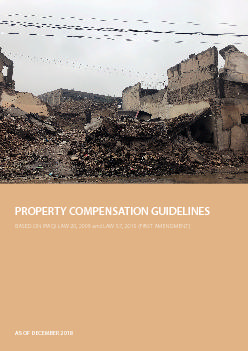Highlights
Although 4.3 million people have returned to areas of origin, 1.6 million IDPs remain displaced as of 30th June 2019. Despite continuing low levels of returns, the amount remaining in displacement has stayed relatively steady since February 2019. Of those in displacement, 32% are in camps with little likelihood of closing soon. Highly vulnerable out of camp IDPs remain scattered within the host community and in some difficult to reach areas. Returnees, unable to sustain themselves in their areas of origin show an increasing trend of returning to camps.
IDPs and returnees need for assistance remain high, and the most vulnerable people remain dependent on humanitarian assistance to survive. Camp upgrading and maintenance, tent replacement, and basic NFI support are required.
For out of camp populations, critical shelter and NFI support are the highest priorities.
In areas with considerable damage from the conflict, people’s highest needs include shelter repairs and transitional shelter solutions.
The government is providing basic humanitarian assistance—including NFI assistance, kerosene deliveries and summer support—supplemented by humanitarian NFI assistance. However, the compensation process to private home owners to repair damages from the conflict is not yet providing assistance at a high-level and is needed to achieve an end to reliance on humanitarian assistance. Stabilisation/development programs have begun and are providing significant gains for populations with damaged houses, however, they must be increased to a level which could encourage more significant durable returns.













